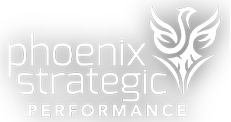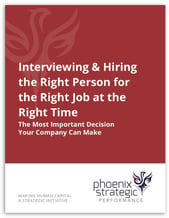By most estimates, only 10 – 30% of training transfers into job performance. That low estimate creates a trillion dollar training problem in the U.S. alone. The whole area of learning transfer – has been significantly neglected as a business discipline. As a result, companies are now being forced to evaluate if their training is having business impact, adding value and delivering the strategic advantage that it should.  To deal with this issue, there appears to be a global movement of people who are filling the potential vacuum in both corporations and the entrepreneurial market. It’s a force not only in the West, but in the Middle East, India and Asia. The outdated learning and development models of the past are being questioned and broken.
To deal with this issue, there appears to be a global movement of people who are filling the potential vacuum in both corporations and the entrepreneurial market. It’s a force not only in the West, but in the Middle East, India and Asia. The outdated learning and development models of the past are being questioned and broken.
In the past, many companies developed people simply to conform and comply to set procedures and standards. This works if the processes, procedures and circumstances remain stable. However, in our changing VUCA (volatility, uncertainty, complexity and ambiguity) world, that's not a reality! The reality is that people need to continually learn, adopt, transfer learning and adapt to new workforce demands.
Premise - The Powerful Business Impact of Learning Transfer
People can only transfer their learning to the job if they understand why the learning transfer is important. We know that when people work in changing or crisis work environments, there is very little time available to understand, which undermines any learning transfer. Therefore, instead of using new skills and behaviors, people often revert to previous, strongly held behaviors. These behaviors are likely to be counterproductive to the new work demands. This ‘logic’ often justifies why companies don’t bother to invest the appropriate amounts of money into people development. And now we have created a vicious cycle of employee underdevelopment. The result - the amount of burnout in corporate and entrepreneurial life is currently excessive.
Universities and training providers have been ‘selling’ programs on understanding / knowledge for decades. This model is now breaking down as people are being given generic programs. All too often, individuals have difficulty applying generic / outdated learning to their specific work context because the learning is no longer relevant. We can no longer afford irrelevant learning on many levels. If the learning is not relevant – don’t bother!
Our VUCA world demands new behaviors. Behavioral change is the only way to ensure sustainability, enabling people to respond to the VUCA world. Forcing people to change doesn't work. Empowering people to learn and achieve is the only way to make sure people grow and develop and, therefore, grow the business.
Congruity between the technological medium of learning transmission and the message of relevant and applicable learning is a key component to enable change. We need to find learning methodologies that empower the individual and create a sense of achievement, where individual achievement has a direct impact on business results.
The Solution
You can’t manage what you can’t measure. Today, we must look for new approaches and solutions to new organizational issues. It’s all in the measurement of the learning transfer, assessing the appropriate and relevant underlying behaviors – not just the outcomes.
The Approach
- The Current State - Assess and diagnose both the organization and every person involved in meaningfully moving the organization forward. All assessment is always relative to the strategy and business outcomes.
- The What - Identify the new and relevant learning and development that must be available.
- The How - Determine the organizational enablers that must be in place to create and embed learning transfer, traction and sustainability.
- The Results - Measure the learning transfer relative to relevant new behaviors and business outcomes.
As you can see, learning and development must be considered a strategic business initiative and a high priority integral to any organization's success. Download the latest checklist, Critical Success Factors for High Impact Learning & Development, to see what is necessary to increase the business impact of learning and development at your organization.
Guest Blog Contributors:
Mike Smith is Director, Learning Transfer Solutions Global. He is passionate about ensuring that individuals become empowered achievers, HR has a strategic role in executive teams, and that businesses gain alignment and fast execution of their business strategies. His current company, LTSGlobal, is dedicated to giving companies, trainers and consultants help to enable them to activate new learning. He can be reached at mike.smith@ltsglobal.com
Carolyn Dare is a Partner with Learning Transfer Solutions Global, a consulting firm that works in a systemic way to lead and anchor large scale change, transformation and performance enhancement initiatives in organisations. She is an accomplished virtual community designer, online facilitator, and website/online simulation developer. She can be reached at carolyn.dare@ltsglobal.com





